5am, dark and two degrees Celsius - Clovis (municipal secretariat of agriculture), Fabio (vice major) and I were in the old Passat heading out of the wonderful district of Ilopolis bound for Machadinho ( pronounced "ma-sha-dji-niho"), a small town 250km to the north. They had been invited to attend a presentation of the most expensive yerba mate trees on the market, the seeds of which go for around US$ 1000 per kilogram when the industry average is only US$ 100 per kg! It's a figure enough to blow a yerba mate farmer out of his boots, and these cowboys never remove their boots...
Once upon a time a yerba mate farmer noticed that a certain cluster of trees on his farm produced more leaves than the others in a given amount of time
. To make a long story short, various specialists got on board to study these specimens, they isolated their unique characteristics and registered one of the first of hundreds of potential sub-species of the yerba mate tree (Ilex Paraguariensis) and called it Cambona 4. If that doesn't raise the hair on your skin, then what will? We now know that Ilex Paraguariensis is merely an umbrella name for all the sub-species of the tree which cannot be visibly distinguished, but can be differentiated in its leaf yield and taste - super important stuff for the hard working men and women of the world of yerba mate production. Before you say, " it can't possibly get any better than this" - starting in 2002 they started to test which combination of natural elements maximised the productivity of the trees whilst maintaining the quality of the final product. They now have their own commercial brand also called Cambona 4, the only yerba known to be from a truly homogeneous source.
Even-though I probably wouldn't pay this off-the-wall price for their product, I did learn a lot about the technicalities of yerba mate cultivation, thanks to the years of hard work this group of professionals have put into studying the tree
...
::: The yerba mate tree occurs naturally in the shade of the jungle canopy. This environment yields high nutrient content in the leaves, but few leaves are produced and they grow very slowly.
::: 95% of the productivity of the tree depends on the quality of photosynthesis and transpiration ( upward movement of water from roots to leaves). Direct sunlight yields more leaves but sacrifices quality (nutrient content). The ideal balance between productivity and quality is achieved by providing the yerba mate tree with partial shade... but not just any shade.
::: Many farmers plant non-indigenous eucalyptus or pine trees to provide shade because they are cheap, grow easily and quickly, however both give off a strong aroma which the yerba mate leaves absorb. Also, they shed a lot of leaves which end up getting mixed into the yerba mate harvest. The best shade providing trees are the native trees, they said.
I think these guys went through a lot of effort to come to the conclusion that the best way to grow yerba mate is to leave it to nature. The most positive result of the research for me is the marketing potential - they can use the research to convince the masses that the seemingly simple concept of "let nature take its course" is both manageable and profitable.
Getting Technical About Yerba
Tuesday, May 27, 2014
 Machadinho, Rio Grande do Sul, Brazil
Machadinho, Rio Grande do Sul, Brazil
Other Entries
-
1Brazilian Hospitality In and Around Favelas
Mar 1672 days prior Sao Paulo, Brazilphoto_camera13videocam 1comment 9
Sao Paulo, Brazilphoto_camera13videocam 1comment 9 -
2Gone Down South
Mar 3058 days prior Porto Alegre, Brazilphoto_camera17videocam 2comment 5
Porto Alegre, Brazilphoto_camera17videocam 2comment 5 -
3Brazilian Students Show Me How To Party
Apr 0453 days prior Pelotas, Brazilphoto_camera16videocam 0comment 0
Pelotas, Brazilphoto_camera16videocam 0comment 0 -
4Settled In
Apr 1146 days prior Porto Alegre, Brazilphoto_camera24videocam 0comment 2
Porto Alegre, Brazilphoto_camera24videocam 0comment 2 -
5Portuguese In The Bag, Time To Hit The Road
Apr 2928 days prior Porto Alegre, Brazilphoto_camera30videocam 0comment 3
Porto Alegre, Brazilphoto_camera30videocam 0comment 3 -
6The National Brazilian Yerba Mate Fest.
May 0621 days prior Venancio Aires, Brazilphoto_camera27videocam 0comment 3
Venancio Aires, Brazilphoto_camera27videocam 0comment 3 -
76th South American Yerba Mate Congress, Uruguay
May 0819 days prior Montevideo, Uruguayphoto_camera35videocam 0comment 7
Montevideo, Uruguayphoto_camera35videocam 0comment 7 -
8SHORT ENTRY: Getting Back to Brazil
May 1314 days prior Santana do Livramento, Brazilphoto_camera1videocam 0comment 3
Santana do Livramento, Brazilphoto_camera1videocam 0comment 3 -
9SHORT ENTRY: Over-Night in Santa Maria
May 1413 days prior Santa Maria, Brazilphoto_camera1videocam 0comment 0
Santa Maria, Brazilphoto_camera1videocam 0comment 0 -
10High Quality Yerba Mate, Brazil - Part 01
May 1512 days prior Palmeira das Missões, Brazilphoto_camera42videocam 0comment 4
Palmeira das Missões, Brazilphoto_camera42videocam 0comment 4 -
11VIDEO ENTRY: Valley of Cuias (Gourds)
May 198 days prior Frederico Westphalen, Brazilphoto_camera28videocam 0comment 2
Frederico Westphalen, Brazilphoto_camera28videocam 0comment 2 -
12SHORT ENTRY: Wet, Cold and High
May 216 days prior Marau, Brazilphoto_camera10videocam 0comment 0
Marau, Brazilphoto_camera10videocam 0comment 0 -
13High Quality Yerba Mate, Brazil: PART 02
May 225 days prior Ilópolis, Brazilphoto_camera42videocam 0comment 1
Ilópolis, Brazilphoto_camera42videocam 0comment 1 -
14Getting Technical About Yerba
May 27 Machadinho, Brazilphoto_camera6videocam 0comment 4
Machadinho, Brazilphoto_camera6videocam 0comment 4 -
15Out Of the Mill Into My Gourd
May 281 day later Barão de Cotegipe, Brazilphoto_camera14videocam 0comment 1
Barão de Cotegipe, Brazilphoto_camera14videocam 0comment 1 -
16Interview at Bom Dia Jornal
May 292 days later Erechim, Brazilphoto_camera8videocam 0comment 0
Erechim, Brazilphoto_camera8videocam 0comment 0 -
17Another Yerba Mate Fest
May 292 days later Palmeira das Missões, Brazilphoto_camera11videocam 0comment 0
Palmeira das Missões, Brazilphoto_camera11videocam 0comment 0 -
18Back to Valley of Gourds
Jun 026 days later Frederico Westphalen, Brazilphoto_camera7videocam 0comment 0
Frederico Westphalen, Brazilphoto_camera7videocam 0comment 0 -
19What Used to be Brazil's 1st Yerba Mate Farm
Jun 0610 days later Santo Ângelo, Brazilphoto_camera19videocam 0comment 0
Santo Ângelo, Brazilphoto_camera19videocam 0comment 0 -
20Boarder Crossing from Brazil to Argentina
Jun 0913 days later Porto Xavier, Brazilphoto_camera5videocam 0comment 0
Porto Xavier, Brazilphoto_camera5videocam 0comment 0 -
21Ancient Secrets of the Good Herb
Jun 1014 days later Apostoles, Argentinaphoto_camera8videocam 0comment 0
Apostoles, Argentinaphoto_camera8videocam 0comment 0 -
22I Had to Jump From a Moving Bus
Jun 1418 days later Encarnacion, Paraguayphoto_camera4videocam 0comment 1
Encarnacion, Paraguayphoto_camera4videocam 0comment 1 -
23This Yerba Is Coming to South Africa
Jun 1418 days later Bella Vista, Paraguayphoto_camera16videocam 0comment 1
Bella Vista, Paraguayphoto_camera16videocam 0comment 1
Comments
2025-05-22
Comment code: Ask author if the code is blank

 Machadinho, Rio Grande do Sul, Brazil
Machadinho, Rio Grande do Sul, Brazil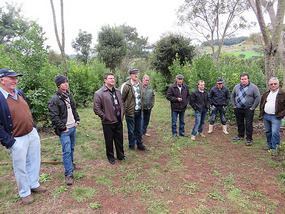
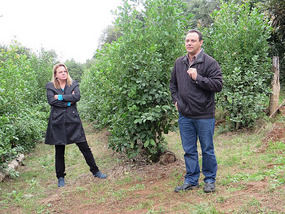




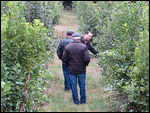
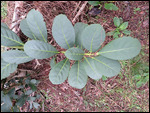
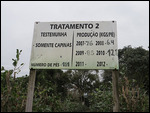
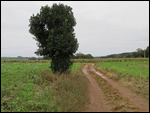
Lady Bonin
2014-07-21
I think it's fantastic that such a reputable company with a receptive market at those kind of prices can push and support the idea of biodiversity. Fantastic! Thanks for all the amazing knowledge Jovi!
Diana Henriksen
2014-07-21
wow if only nature could provide the masses....thanks for all ...great to get to travel and research with you.
Fabricio
2014-07-21
Wonderfull people there. Congratulations. But to stabelish one kind of tree on monoculture style shows where argentina landed with erva…one quality…. :-) erva mate shal not be the new soja, so I would prefer diversity….anyway I can only say this project is amazing and they work hard with high standards.
luca
2014-07-21
Very interesting!! El natural is always best!